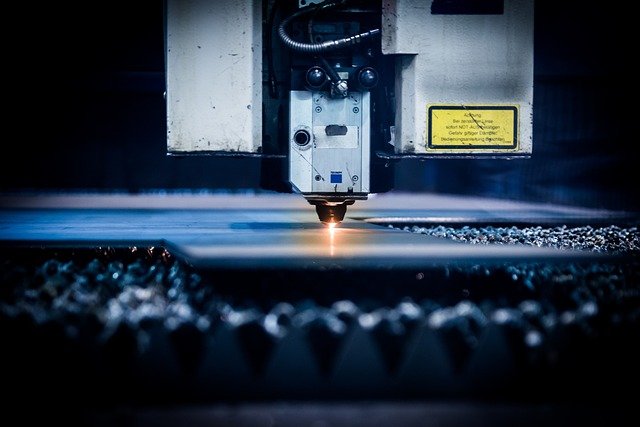The Rise of DIY Welding: Exploring Compact Laser Solutions for Home Projects
In recent years, the world of welding has undergone a significant transformation, making it more accessible to DIY enthusiasts and hobbyists. This shift has been largely driven by the introduction of compact laser welding machines, which offer a user-friendly alternative to traditional welding methods. As more people discover the potential of these innovative tools, the landscape of home repair and DIY projects is evolving rapidly.

Why are DIYers turning to compact laser welding solutions?
The growing popularity of compact laser welding machines among DIY enthusiasts can be attributed to several factors. Firstly, these devices offer precision and control that traditional welding methods often lack. Laser welding allows for incredibly accurate and clean welds, making it ideal for delicate or intricate projects. Additionally, the compact size of these machines makes them perfect for home use, as they can be easily stored and transported.
Another significant advantage is the reduced learning curve associated with laser welding. While traditional welding techniques often require extensive training and practice, laser welding machines are designed with user-friendliness in mind. This accessibility has opened up the world of welding to a broader audience, encouraging more people to tackle projects they might have previously considered beyond their skill level.
Can you really weld at home without training?
While laser welding machines have made the process more accessible, it’s important to note that some level of training and safety knowledge is still essential. However, the learning curve for laser welding is generally less steep than that of traditional welding methods. Many compact laser welders come with comprehensive user manuals and even video tutorials, allowing DIYers to quickly grasp the basics.
That being said, it’s crucial to prioritize safety when working with any welding equipment. Proper eye protection, ventilation, and adherence to manufacturer guidelines are non-negotiable. While you may not need extensive formal training, taking the time to thoroughly understand your equipment and safety procedures is vital before embarking on any welding project at home.
What key features make a laser welding machine beginner-friendly?
Several features contribute to making laser welding machines more approachable for beginners:
-
Intuitive controls: Many modern laser welders feature straightforward interfaces with preset options for different materials and thicknesses.
-
Built-in safety features: Automatic shut-off mechanisms and protective shields help prevent accidents and injuries.
-
Adjustable power settings: This allows users to fine-tune the laser output for different materials and project requirements.
-
Compact design: Smaller, portable units are easier to handle and store, making them ideal for home use.
-
Clear visibility: Many laser welders incorporate transparent shields or screens that allow users to observe the welding process clearly and safely.
These features collectively contribute to a more user-friendly experience, enabling beginners to gain confidence and skill more quickly.
How do lightweight laser welders enhance everyday fixes?
Lightweight laser welders have revolutionized the way DIY enthusiasts approach everyday repairs. Their portability allows for easy maneuvering in tight spaces, making them ideal for tasks like fixing garden tools, repairing household appliances, or working on automotive projects. The precision of laser welding also means that repairs can be made with minimal damage to surrounding areas, preserving the integrity of the item being fixed.
Moreover, the versatility of these machines allows users to work with a variety of materials, including metals, plastics, and even some ceramics. This flexibility makes them invaluable for a wide range of household repairs and creative projects, from jewelry making to custom metalwork.
What should you look for in a simple, home-ready welder?
When selecting a laser welder for home use, several factors should be considered:
-
Power output: Ensure the welder has sufficient power for your intended projects.
-
Ease of use: Look for models with intuitive controls and clear instructions.
-
Safety features: Prioritize welders with robust safety mechanisms.
-
Portability: Consider the size and weight if you plan to move the welder around.
-
Versatility: Choose a model that can handle various materials and thicknesses.
-
Cost: Balance your budget with the features and quality you need.
| Product | Provider | Key Features | Cost Estimation |
|---|---|---|---|
| Handheld Fiber Laser Welder | JPT Laser | Portable, 1000W power, suitable for various metals | $2,000 - $3,000 |
| Desktop Laser Welding Machine | Cloudray Laser | Compact, user-friendly interface, 200W power | $1,500 - $2,500 |
| Mini Spot Welder | SUNKKO | Pulse & constant current modes, LED display | $300 - $500 |
| Portable Laser Welding Machine | DIHORSE | Handheld design, 1500W power, air cooling | $3,000 - $4,000 |
Prices, rates, or cost estimates mentioned in this article are based on the latest available information but may change over time. Independent research is advised before making financial decisions.
The advent of compact laser welding machines has undoubtedly transformed the DIY landscape, making welding more accessible to enthusiasts of all skill levels. While these tools offer numerous advantages in terms of precision, ease of use, and versatility, it’s crucial to approach them with respect for safety procedures and proper training. As technology continues to advance, we can expect even more user-friendly and efficient welding solutions to emerge, further empowering DIYers to tackle complex projects and repairs at home.




